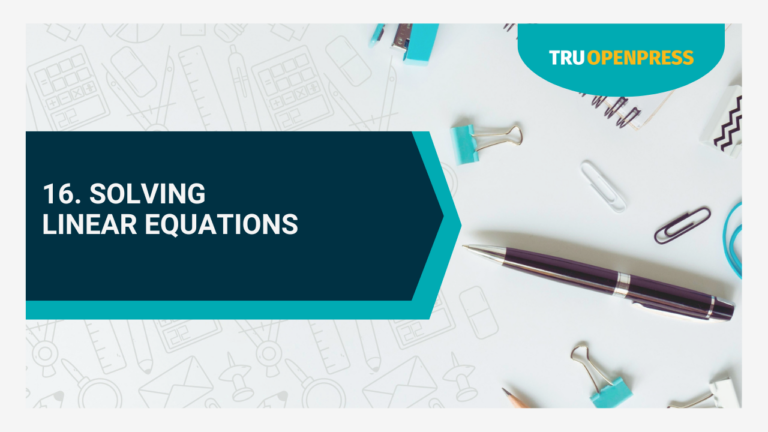19. Solving Linear Inequalities
Photo Of Person Teaching On White Board by Vanessa Garcia is used under the pexels license.
Learning Objective:
Solve a linear inequality by finding all the values of the variable that satisfy the inequality.
Video:
Interactive Activity
PDF Notes Link:
Notes:
Representing inequalities using interval notation
Thinking about numbers as points along a number line helps us understand inequalities. For example, the statement x > 4 indicates all real numbers that are greater than 4. We can denote this using interval notation as x ∈ (4, ∞), where the parentheses (rounded brackets) indicate the endpoints of the interval are not included. We can visualize this on a number line as:
Other examples
- x ≥ 4, i.e., x ∈ [4, ∞). The left square bracket indicates the endpoint 4 is included.
- x < 4, i.e., x ∈ (-∞, 4). The parentheses indicate the endpoints are not included.
- x ≤ 4, i.e., x ∈ (-∞, 4]. The right square bracket indicates the endpoint 4 is included.
- -4 < x < 4, i.e., x ∈ (-4,4). The parentheses indicate the endpoints are not included.
Note that “infinity” (∞) and “negative infinity” (-∞) are not real numbers and are always excluded from the endpoints of real number intervals.
Solving linear inequalities
To solve an inequality means to find all the values of x that satisfy the inequality, meaning that substituting one of those values for x would result in a true statement.
For example, solve 7x – 4 ≤ 4x + 5 by isolating x on one side of the inequality with just numbers on the other side. To do this we can add an expression to both sides of the inequality or multiply both sides of the inequality by an expression that is always positive. We can then check the answer with a test value.
- 7x – 4 + 4 ≤ 4x + 5 + 4
- 7x – 4x ≤ 4x + 9 – 4x
- 3x × (1/3) ≤ 9 × (1/3)
- x ≤ 3, i.e., x ∈ (-∞, 3].
- Check: 7(2) – 4 ≤ 4(2) + 5: 10 ≤ 13.
We must be careful to reverse the inequality when multiplying both sides of the inequality by an expression that is always negative. For example: 1 < 2 but -1 > -2.
An example of multiplying both sides by a negative expression
Find the values of x such that 3x + 2 < 5x + 6.
- 3x + 2 – 2 < 5x + 6 – 2
- 3x – 5x < 5x + 4 – 5x
![]()
- x > -2, i.e., x ∈ [-2, ∞).
- Check: 3(-1) + 2 ≤ 5(-1) + 6: -1 < 1.
An example of a continued inequality (isolate x in the middle)
![]()
- -5 < -4x + 3 ≤ 15
- -8 < -4x ≤ 12
- 2 > x ≥ -3 → -3 ≤ x < 2, i.e., x ∈ [-3,2).
![]()
More examples
Find the values of x such that 9x + 2 ≥ 5x – 2.
- 9x – 5x ≥ -2 – 2
- 4x ≥ -4
- x ≥ -4 × (1/4) = -1, i.e., x ∈ [-1, ∞).
- Check: 9(1) + 2 ≥ 5(1) – 2: 11 ≥ 3.
Find the values of x such that -5 ≤ (-2x-5)/3 < 1.
![]()
- -15 ≤ -2x – 5 < 3
- -15 + 5 ≤ -2x < 3 + 5
- 5 ≥ x > -4 → -4 < x ≤ 5, i.e., x ∈ (-4,5].
![]()
Transcript:
The video transcripts are accessible for viewing and downloading below.





